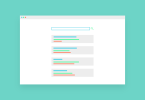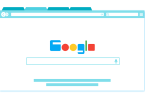H1 tags have an important function for both users and SEO for your site. And if you are serious about increasing your website traffic, you need to optimize your H1 tags the right way. As you’ll discover below, H1 tags not only make webpage content more structured and easier to read, but they’re also a critical SEO component that can affect how well your pages rank for your target keywords in Google. So to make sure you get the most out of your <h1>, I’ve put together a list of H1 tag optimization best practices that you can follow on your site.
What are H1 tags in HTML?
H1 tags are a defining element in HTML. It is written as <h1> in the HTML code. The HTML tag is usually the first visible header tag on a webpage. The H1 tag in HTML is often identified in capital letters as the most important heading.
Why are H1 tags used in HTML?
H1 tags are used in HTML to define the first heading on a web page. In proper HTML heading markup, the <h1> tag is used to introduce the main subject of the page. A correct hierarchical layout would have <h2> as a subsection of <h1>. Now you know the basic ideas behind the H1 tag. Next, I’ll go over the top H1 SEO practices that can get you the most value from your HTML <h1> element.
How to improve your H1 tags to get higher rankings?
1. Put keywords in H1 tags
According to experts, H1 tags are one of the top 3 best on-page SEO ranking factors. The other two factors are the page title (also known as the meta title) and the URL. To get the most out of the SEO from your H1 tag, you should place your main keyword in this HTML element. And if you can add secondary keywords, or even a long version of the main keyword, in <h1> you can benefit as well.
Also, place your keyword as close to the beginning of the H1 tag as possible. The closer the keyword is to the beginning of the HTML <h1> element, the higher the SEO weight. And never repeat keywords. In addition, always remember that your H1 tag must be user readable. Avoid putting as many keywords as possible in this HTML element.
If you’re writing for visitors first and then optimizing for Google, you can of course add keywords without sacrificing user experience. For example, I want to rank this page for the following keyword variations:
If you look at the H1 tags for this page (pictured below), you’ll see that I only used the first variation of the keyword as an exact match in the HTML element. I have not included other versions because it is not necessary. Each of the words that make up these keyword versions are included in the first change.
If you’re not sure what keywords to use in your H1 tags, see my guide on why keyword research is important for SEO. It includes a simple process on how to choose the best keywords to use on your pages.
2. Think of your user goal with H1 tags
Search engines like Google are increasingly focused on finding the intent of their users and delivering search results that meet that intent. And just because a web page has a specific keyword in the H1 tags does not mean that the content meets the user’s intent. Here’s a quick example of what I mean:
Let’s say you search for the keyword “how many keywords per page” on Google. Your goal is obviously to find the number of keywords you need to optimize the web page for. Is it 2 keywords, 5 keywords or more? Now imagine you clicked on a Google search result that had the following page title: “How Many Keywords Are Per Page (Step-by-Step Guide)” and when you visited the page, you came across this H1 tag, “How Many Keywords Should You Follow Per Page?” This content does not match your search intent, does it? And if you see an H1 tag, you should probably leave the page and return to the Google search results page (SERP) to find something more relevant.
Now let’s imagine you clicked into my website in the SERP and found this H1 tag: “How many keywords on a page should you focus on for SEO?” This content matches your search intent. And you keep reading the page. So how do you make sure you meet user intent with H1 tags and don’t miss out on getting more engaged visitors here?
According to search metrics, when you write content, you want to ask questions like:
- What does the user want when opening my article?
- What is their intention?
- And your H1 tag must meet this requirement.
Basically, you want to give the visitor the purpose of the <h1> tag. When someone sees a promising result on a SERP search engine results page and clicks on it, it is the words in the H1 that confirm or deny that the user is on the correct page. So, make it a practice to always meet your user intent with your H1 tag. A simple way to achieve this is to make the meta title tag and H1 tag the same. This way there is no confusion for the user. Also, this SEO strategy can reduce the chances that Google’s algorithm will rewrite meta titles when it thinks there is a mismatch in user intent.
According to Zippy, after analyzing 81,000 page titles, Google rewrote 61.6% of them for indexing in SERPs. Some of the rewrites were minor, others very significant. So the most effective way to reduce the chance of your address being rewritten by Google is to match it with an H1 tag, or at least, so similar to it that the rewrite doesn’t matter much to the user.
3. Keep your H1 between 20 and 70 characters
While there’s no technical limit to the length of H1 tags — you can make them as long or short as you like — the best practice for H1 SEO is to keep them between 20 and 70 characters. If your H1 is too short, you’re wasting important SEO space. And if the H1 is too long, you reduce the strength of the tag. As I mentioned in my first H1 SEO tip, the <h1> tag is a good place to add secondary keywords. It is always better to make the H1 longer than shorter because you can optimize this heading for other keywords that you want to rank the page for.
4. Use only one H1 tag
Given that the H1 tag is a powerful SEO HTML element, you might think that using more than one <h1> on a page would be a good idea. Although the Search Engine Roundtable reported that John Mueller of Google said that using multiple H1s on the same page is fine, it is bad SEO practice. Because having more than one H1 tag can reduce the SEO power of the H1 element. So, if you want maximum SEO for your keywords, your web pages should have only one optimized H1 tag and no more.
5. Make your H1 tag stand out
In H1 Best Practice #2 above, I stressed the importance of satisfying the user’s intent in the <h1> tag. This is because visitors want to know immediately that they are on the right page and get the exact information they are looking for. Besides this concept, it includes making your H1 tags stand out to the reader. In proper HTML heading markup, the <h1> tag is used to provide the main subject of the page, so the H1 should also be the most prominent visual element on the page. So, the best ways to design your H1 are:
- be large (font size 30px or larger)
- Be bold (pen weight 700 to 900)
- Must be prominent (above the content)
By combining good web design and SEO practices with H1s, you can improve the user experience of your web pages while also harnessing the ranking power of on-page search engine optimization. However, H1s are not the only way to improve your keyword search results. There are actually about 10 other easy things you can do to increase your traffic, which are covered on that linked page. Once you have optimized your H1 tags and other on-page SEO elements, you can visit this page to learn how to check keyword rankings on Google to track your progress.
Are H1 Tags Important for SEO?
H1 tags are important for SEO because having H1 tags on your pages can help your content rank better in the SERPs. H1 tags are important for SEO because they tell search engines and visitors what the page is about, which is why the H1 is an important place to put your keywords. Without the H1 tag, you can reduce the SEO page ranking power because the HTML <h1> element is one of the three most important ranking factors for page optimization. Therefore, you should always include the H1 on the page and optimize it as best as possible for search engines and website users.
Is it bad to have multiple H1 tags?
In terms of HTML markup, it’s not a bad idea to have many H1 tags on a page. However, having more than one H1 tag is bad for SEO because having multiple H1 tags on a page reduces the ranking power of the H1 HTML element. The main purpose of the H1 tag in HTML markup is to provide the main topic of the page. A correct hierarchical layout would have <h2> as a subsection of <h1>. This is why on most web pages you will see one H1 tag followed by several H2 tags.
What should my H1 tag look like?
Your H1 tag should be a description of the page. Your H1 tag should also contain your top keywords. You can match the H1 tag to the page title tag, but you don’t have to. The H1 should strike a good balance between SEO and helping readers understand what the page is about.
Can the title and H1 tag be the same?
Title and H1 tags can be the same. And in many cases, this is an SEO best practice as long as it serves the user’s intent. Additionally, the heading and H1 tags can be similar and close to each other, but they don’t have to be the same. As per Google’s own recommendations, we encourage you to “match your page meta [title tag] and H1” and it’s not hard to change the ranking. The H1 SEO best practice here is to make both the title tag and the H1 match as closely as possible.
However, I often remove redundant words that only serve the purpose of the title tag in SERPs. Use only the best for your content. It could be a slight change between the title tag and the H1 tag, or an exact match. Both are perfect for your search engine optimization.
As you can see, there are several approaches that every web page should follow. These methods include having keywords in the HTML <h1> element, satisfying the user’s intent, keeping the length between 20 and 70 characters, using only one <h1> on the page, and making the tag stand out to the user.








Leave a Comment